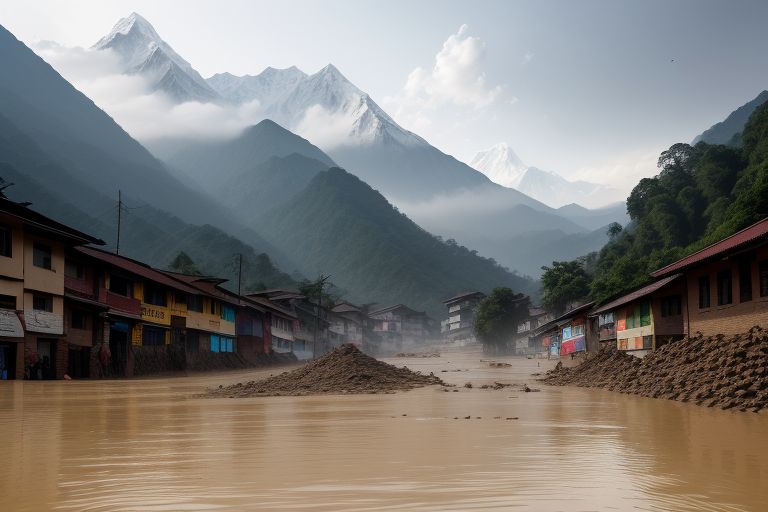Nepal is grappling with the devastating aftermath of severe floods and landslides triggered by intense monsoon rains, with the death toll surpassing 100 and dozens more reported missing. The western and central regions of the country have been particularly hard hit, with rescue and relief efforts hampered by damaged infrastructure and ongoing adverse weather conditions. The disaster has displaced thousands of families and caused extensive damage to homes, agricultural land, and critical infrastructure.
The Nepal Army, Armed Police Force, and local authorities have mobilized to conduct search and rescue operations in affected areas. Helicopters have been deployed to remote villages cut off by floodwaters and landslides. However, continuous rainfall and difficult terrain pose significant challenges to rescue teams. Many survivors are stranded on rooftops or higher ground, awaiting evacuation as floodwaters continue to rise in some areas.
The government has declared a state of emergency in the worst-affected districts, allowing for the rapid deployment of resources and personnel. Temporary shelters have been set up to house displaced families, with local and international aid organizations working to provide food, clean water, and medical assistance. However, the scale of the disaster has stretched emergency response capabilities, and there are growing concerns about the potential for waterborne diseases and food shortages in the coming days.
Prime Minister Pushpa Kamal Dahal has called for national unity in the face of the crisis and has pledged full government support for rescue and relief efforts. He has also appealed for international assistance as the country struggles to cope with the magnitude of the disaster. Several neighboring countries, including India and China, have offered support, with some already dispatching relief materials and rescue teams to assist Nepal’s efforts.
The floods have caused significant damage to Nepal’s agricultural sector, with vast swathes of farmland submerged and crops destroyed. This is expected to have long-term implications for food security and the livelihoods of rural communities. The government is assessing the disaster’s economic impact and working on plans for rehabilitation and reconstruction once the crisis subsides.
Environmental experts have pointed to climate change as contributing to the increasing frequency and intensity of monsoon-related disasters in Nepal. They argue that the country’s vulnerable geography, combined with inadequate disaster preparedness and infrastructure, has exacerbated the impact of extreme weather events. Calls are growing for more robust climate adaptation strategies and improved early warning systems to mitigate future risks.
The disaster has also highlighted the need for better urban planning and stricter building code enforcement, particularly in flood-prone areas. Many of the casualties occurred in informal settlements built along riverbanks or on unstable slopes, underscoring the vulnerability of Nepal’s poorest communities to natural disasters. Experts stress the importance of integrating disaster risk reduction measures into development planning to build more resilient communities.
As rescue operations continue, there are concerns about the long-term psychological impact on survivors, many of whom have lost family members, homes, and livelihoods. Mental health professionals emphasize the need for sustained psychosocial support in affected communities. The government and aid organizations are working to incorporate mental health services into their relief efforts, recognizing the importance of addressing the disaster’s physical and emotional toll.


